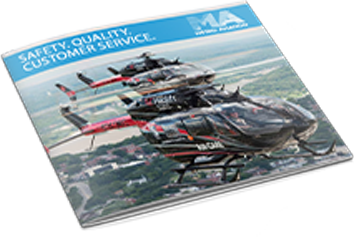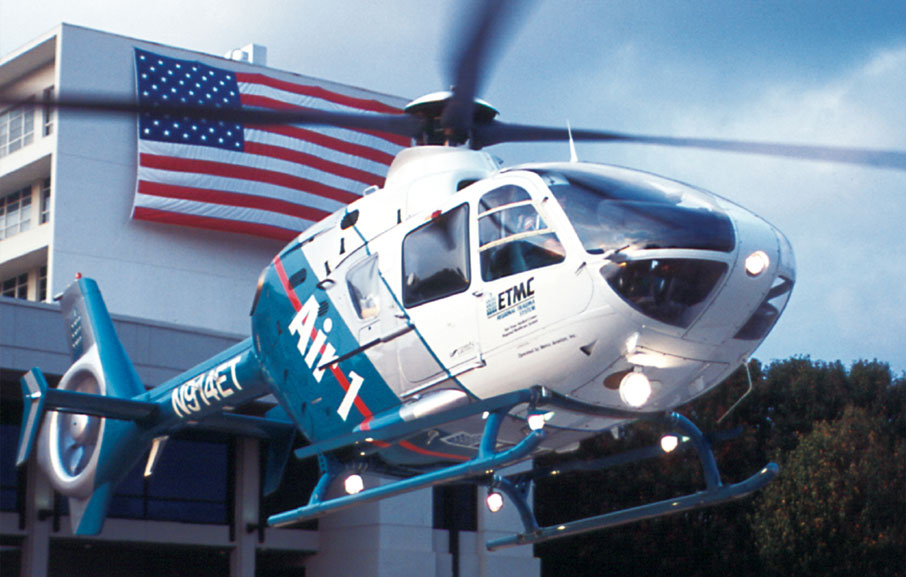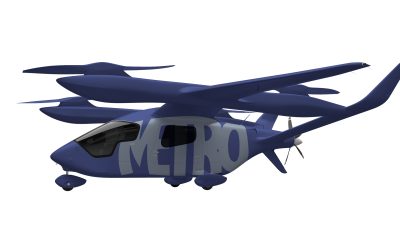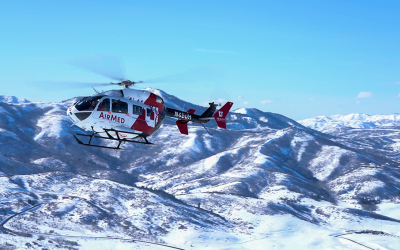metro study proves pulselite’s worth in preventing bird strikes
May 28, 2018
Use of the Precise Flight Inc. Pulselite System is a significant factor in reducing the number of bird strikes with aircraft, a new study conducted by Metro Aviation has found.
Precise Flight, based in Bend, Oregon, developed the Pulselite System in 1984, and it has since been installed on over 25,000 aircraft – both fixed- and rotary-wing. The system is a Federal Aviation Administration (FAA)-certified lighting controller that pulses the existing lights on an aircraft, both to increase aircraft recognition to other pilots and to reduce bird strikes.
Moving lights are recognized earlier by both the human eye and the avian eye than static lights, said Doug La Placa, CEO of Precise Flight. The FAA released a Technical Note in May 2012 that showed static lights actually attract birds, while pulsing lights repel birds, he added.
According to the U.S. Fish and Wildlife Service, populations of large bird species are on the rise in North America; as these bird populations grow, as does the threat of catastrophic strikes with rotorcraft.
Within the last five years, the Pulselite System has become increasingly popular with rotorcraft, with supplemental type certificates (STCs) covering their installation on all Airbus helicopter models; various Bell models including the 407; the Robinson R22 and R44; and the Leonardo AW139. With a patented traffic collision avoidance system (TCAS) integration, the Pulselite System automatically initiates when a TCAS alert is activated on an aircraft.
Companies such as Maverick Helicopters and Qantas Airways have conducted successful studies on the effectiveness of the system in relation to bird strikes in the past, and now Metro Aviation has joined the list of operators giving the system their approval.
“Metro Aviation has been a leader in aviation safety for many years,” said La Placa. “Their recent study on the effects of pulsing lights on bird strikes is another example of their seriousness and dedication to rotorcraft safety.”
Metro Aviation conducted its investigation into bird strikes as part of an overarching safety evaluation of its operations.
“When we initially started the study, we weren’t planning on looking specifically at the Pulselites — that was just one factor out of all the different factors we were looking at,” said Brady Carpenter, FOQA/SMS data analyst at Metro Aviation. “It just so happened when we got the results, the Pulselite System seemed to be the most significant result out of the study we performed.”
The study looked at 43 helicopters in Metro’s fleet for the migratory months of September and October in 2016 and 2017, as well as an entire two-year period for those two calendar years. The 43 aircraft included EC135s (which make up the bulk of Metro’s fleet), AS350s, EC130s, and EC145s.
During the September and October periods, Metro found it was five times more likely to have a bird strike an aircraft that was not Pulselite-equipped than hit an aircraft that was. For the entire two-year period, it was three times as likely to have a bird strike on an aircraft that was not Pulselite-equipped.
“The chances [of bird strikes] were significantly reduced with Pulselites,” said Ed Stockhausen, director of safety at Metro Aviation. “You could see it over all periods and across the country. . . . Our long-term goal is to, over time, equip the fleet with the Pulselites – it’s an ongoing effort.”
Metro also found that aircraft cruising below 2,000 feet were at greatest risk to strikes. “Data shows — not just our data, but bird-strike data that the FAA collects — that you’re 62 to 64 percent more likely to have a bird strike below 2,000 feet, as opposed to above 2,000 feet,” said Stockhausen, adding that the company’s average altitude of bird strikes varied between 1,300 and 1,500 feet.
“If you look at it purely from a financial perspective, it only takes one bird strike typically for the Pulselite System to pay for itself many times over,” said Precise Flight’s La Placa. “If you look at it from a safety perspective, the value is enormous.”
Metro’s study also found a correlation between the extent of damage caused by bird strikes and whether the aircraft had Pulselites. Stockhausen said the damage to aircraft and average out-of-service time after a bird strike was greater if the aircraft didn’t have the Pulselite System on board.
The Pulselite System’s customers include PHI Helicopters, Sundance Helicopters, the U.S. Forest Service, Blue Hawaiian Helicopters, the L.A. County Fire Department, ERA Helicopters, and most recently Air Methods — which La Placa said is in the process of conducting its own bird-strike study with the system, to be completed by the end of the year.
Stay Updated with Metro
Metro Aviation Orders BETA Technologies’ eVTOL for Medical Transport
Metro Aviation Orders BETA Technologies’ eVTOL for Medical Transport November 4, 2024 Metro has placed a deposit-backed order for up to 20 A250 aircraft, with plans to integrate the airframe into its existing fleet. Metro Aviation, the world’s largest family-owned,...
Metro Aviation attends AMTC in Salt Lake City
Metro Aviation attends AMTC in Salt Lake City November 3, 2024 Metro Aviation, a leader in air medical transport solutions, is back on the show floor at the Air Medical Transport Conference (AMTC), taking place this week. The company is proud to display two EC145...
Metro Welcomes New Director of Safety
Metro announces new director of safety October 15, 2024 Metro Aviation has appointed Brady Carpenter as Director of Safety. Brady joined Metro Aviation in 2016 as an Operational Control Specialist before joining the Safety Department as the Flight Operations Quality...
Download Brochure
Metro Aviation is constantly growing our capabilities and expanding our reach. Metro holds more than 30 Supplemental type Certificates (STC) and completes about 35 aircraft each year for U.S. customers anf global clients.





